24 Hours Hotline: +86 137-3541-1378
Email:[email protected]
24 Hours Hotline: +86 137-3541-1378
Email:[email protected]
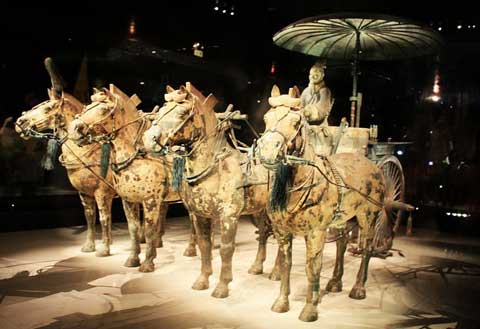
Introdution of Xi'an
Xian is the capital of Shaanxi province, located in the southern part of the Guanzhong Plain. With the Qinling Mountainsto the south and the Weihe River to the north, it is in a favorable geographical location surrounded by water and hills. It has a semi-moist monsoon climate and there is a clear distinction between the four seasons. Except the colder winter, any season is relatively suitable for traveling.
Traditional downtown Xian refers to the area encircled by the city wall, this has now been expanded to encompass the area within the second ring road. The Bell Tower is the geographical center of Xian and the four main streets are respectively Dong Dajie (East Street), Xi Dajie (West Street), Nan Dajie (South Street) and Bei Dajie (North Street) which are also the main commercial streets.
Praised as “the capital of table delicacies” Xian has been rich in the delicious Shaanxi snack, delicate Guangdong Cuisine, various kinds of fashionable foreign delicacies, and popular Sichuan Cuisine such as the hot pot. Among all the delicacies, the most famous and popular one is the Muslim Snack Street, Beiyuanmen.
Xi'an History
Xi'an was among the most important cities of China before 1000 AD. It remains a major regional centre. Xi'an was known as Chang'an in ancient times.
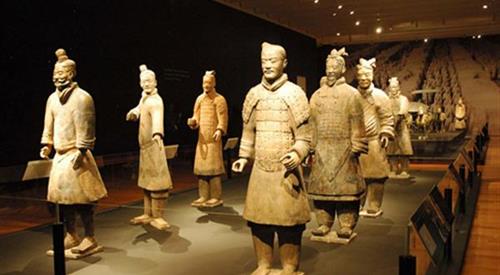
Timeline
1. Zhou Dynasty established its capital in Feng and Hao between the late 11th century BC and 770 BC, both located west of contemporary Xi'an. In 770 BC, the capital was moved to Luoyang due to political unrest.
2. The state Qin moved its capital to Xianyang 350 BC just north of today's Xi'an on the north shore of Wei River.
3. Qin Dynasty (221-206 BC) constructed its capital in Xianyang. It was burned by Xiang Yu at the end of the dynasty.
4. 202 BC: Liu Bang, the founding emperor of the Han Dynasty, established Chang'an province as his capital; his first palace Changle Palace (???/???) was built across the river from the ruin of the Qin capital. This is traditionally regarded as the founding date of Chang'an and Xi'an.
5. 200 BC: Emperor Liu Bang built Weiyang Palace in Chang'an.
6. 194 BC: Construction of the first city wall of Chang'an began, which was not finished until 190. The wall measured 25.7 km in length, 12–16 m in thickness at the base. The area within the wall was ca. 36 km2.
7. 190 AD - The most powerful tyrant of the time, Dong Zhuo, moved his court from Luoyang to Chang'an in a bid to avoid a coalition of powerful warlords going against him.
8. 582: Emperor of Sui Dynasty ordered a new capital to be built southeast of the Han capital, called Daxing (??, great excitement). It consisted of three sections: the palace, the imperial city, and the civilian section. The total area within the wall was 84 km2, The main street Zhuque Avenue measured 155 m in width. It was at the time the largest city in the world. The city was renamed Chang'an (??, Perpetual Peace or Eternal Peace) by the Tang Dynasty.
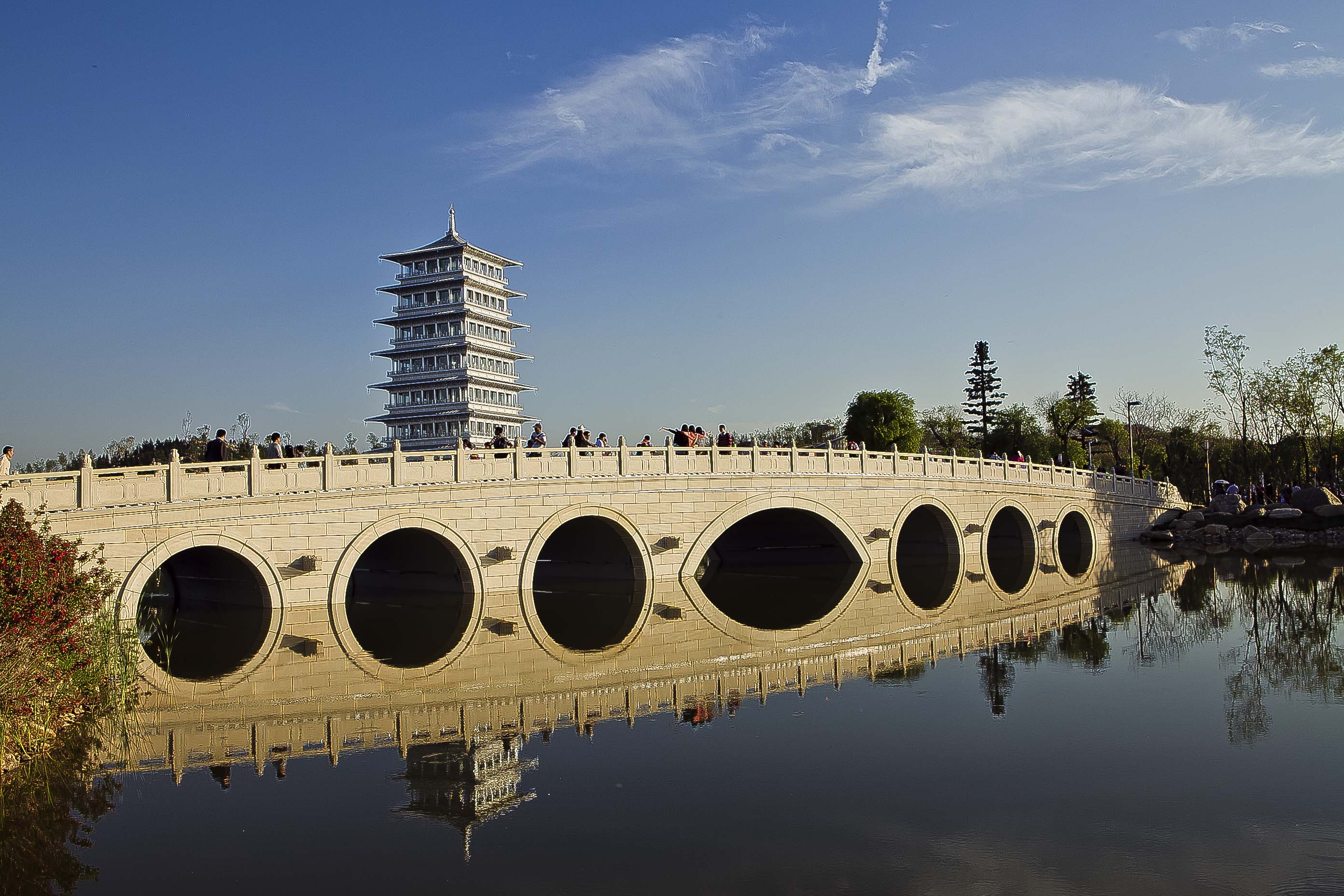
9. 7th century: Buddhist monk Xuanzang, well known as Tang Sanzang in China, established a sizeable translation centre after returning from India with Sanskrit (the first language spoken in India) scriptures.
10. 652: Construction of Great Wild Goose Pagoda began. It measured 64 m in height. This pagoda was constructed for the storage of the translations of Buddhist sutras obtained from India by the monk Xuanzang.
11. 707: Construction of Small Wild Goose Pagoda began. It measured 45 m in height. After the earthquake of 1556, its height was reduced to 43.4 m.
12. 904: The end of the Tang Dynasty brought destruction to Chang'an. Residents were forced to move to Luoyang, the new capital. Only a small area continued to be occupied after the destruction.
13. 1370: The Ming Dynasty built a new wall to protect a much smaller city of 12 km2. The wall measured 11.9 km in circumference, 12 m in height, and 15–18 m in thickness at the base.
14. 1936: Xi'an was the site of the Xi'an Incident during the Second Sino-Japanese War. The Xi'an Incident brought the Communist Party of China and Kuomintang to a truce so the two forces could concentrate on fighting against Japan.
15. 1949: May 20, 1949: The People's Liberation Army captured the city of Xi'an from the Kuomintang.
Xian Cuisine
Beef Or Mutton Paomo
Paomo is a specialty of Shaanxi cuisine and is a typical food eaten in the city of Xi'an. It is a hot stew of chopped-up steamed leavened bread (known regionally as mo or mantou, cooked in lamb broth and served with lamb meat, sometimes substituted with beef.
Lamb paomo (????; ????; yángròu pàomó) is made of lamb soup and a great amount of flat bread. When making this dish, the cook breaks the bread into small pieces and adds them to the lamb soup. The beef version is beef paom. Paomo is often eaten with pickled garlic and chili sauce.
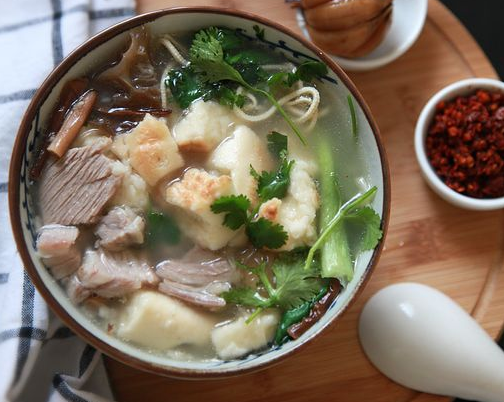
Dumpling Banquet
The dumplings are small balls of dough that are filled with any number of fillings, including vegetables, meat, seafood, etc. Most families have their own recipe for how to make the best dumplings and during many holidays this is the food of choice. These dumplings became to symbolize wealth and prosperity due to the likeness they shared with gold and silver ingots of ancient times. The Imperial Dumpling Banquet in Xi'an offers guests with a wide selection of these delicious buns to try. Each dumpling that is served is unique in its shape, filling, meaning, and even dough. After the banquet each guest will be given a dumpling that holds a number and inside will hold a number that relates to a fortune. It is an activity that cannot be missed when visiting Xi'an.
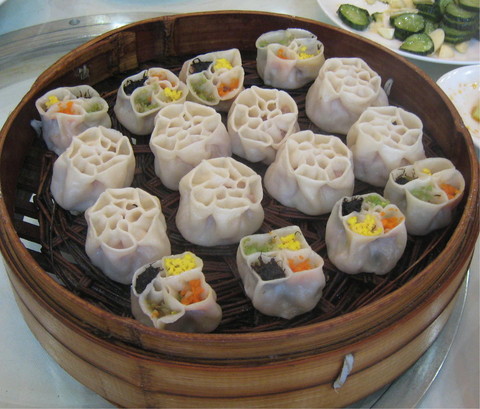
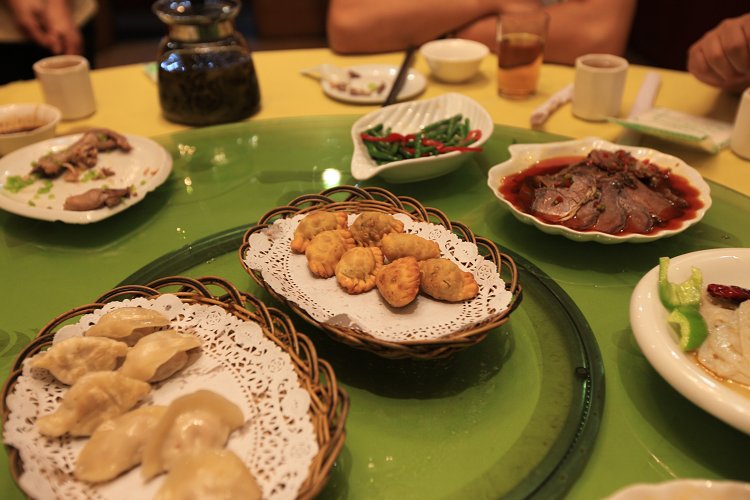
Roujiamo
Roujiamo, also known as rougamo or rou jia mo, meaning "meat burger" or "meat sandwich," is a street food originating from the cuisine of Shaanxi Province and now widely consumed all over China. The meat is most commonly pork, stewed for hours in a soup containing over 20 spices and seasonings. Although it is possible to use only a few spices (which many vendors do), the resulting meat is less flavourful.
Many alternative fillings are available. For example, in Muslim areas in Xi'an, the meat is usually beef (prepared kabob-style and seasoned with cumin and pepper), and in Gansu Province it is often lamb. The meat is then minced or chopped, then mixed with chopped coriander and capsicums, and stuffed in "mo", a type of flatbread. An authentic mo is made from a wheat flour batter and then baked in a clay or mud oven, but now in many parts of China, mo is made in a frying pan or a pressure cooker (some even substitute a steamed bun), and the resulting taste diverges significantly from the authentic clay oven-baked version. Depending on the types of spices used to cook the meat and the way the bread is made, the taste of roujiamo can vary greatly from vendor to vendor.
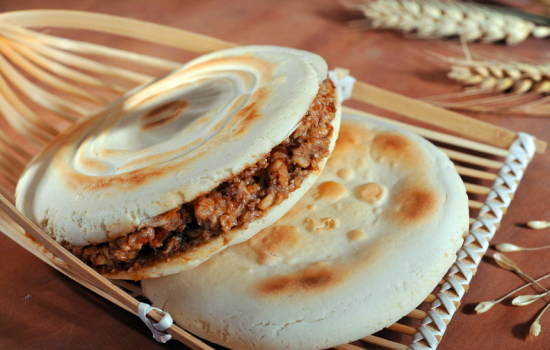
Qinzhen Liang Pi
Liangpi (simplified Chinese: ??; traditional Chinese: ??; pinyin: liángpí; literally: "cold skin") is a noodle-like Chinese dish made from wheat or rice flour. It is a specialty dish originating from the cuisine of Shaanxi Province, but has now spread to many other places in China, in particular the northern and central regions. In northwestern areas of China, it is often called liangpi zi (???). Although liangpi is served cold, they are served in every season, including winter.
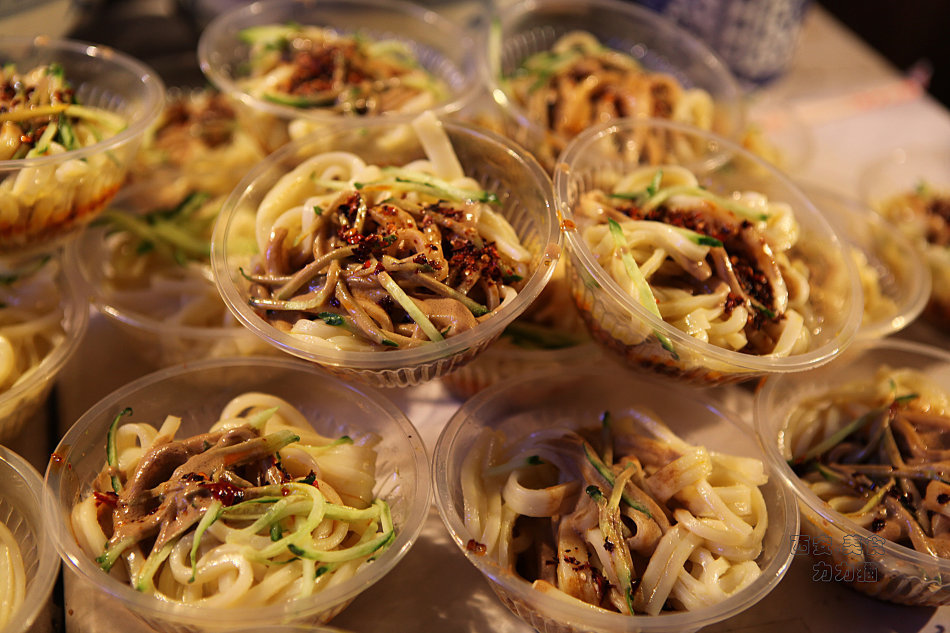
Xian Attractions
Terracotta Warriors
The Terracotta Army is a collection of terracotta sculptures depicting the armies of Qin Shi Huang, the first Emperor of China. It is a form of funerary art buried with the emperor in 210–209 BCE and whose purpose was to protect the emperor in his afterlife.
The figures, dating from approximately the late third century BCE, were discovered in 1974 by local farmers in Lintong District, Xi'an, Shaanxi province. The figures vary in height according to their roles, with the tallest being the generals. The figures include warriors, chariots and horses. Estimates from 2007 were that the three pits containing the Terracotta Army held more than 8,000 soldiers, 130 chariots with 520 horses and 150 cavalry horses, the majority of which remained buried in the pits nearby Qin Shi Huang's mausoleum. Other terracotta non-military figures were found in other pits, including officials, acrobats, strongmen and musicians.
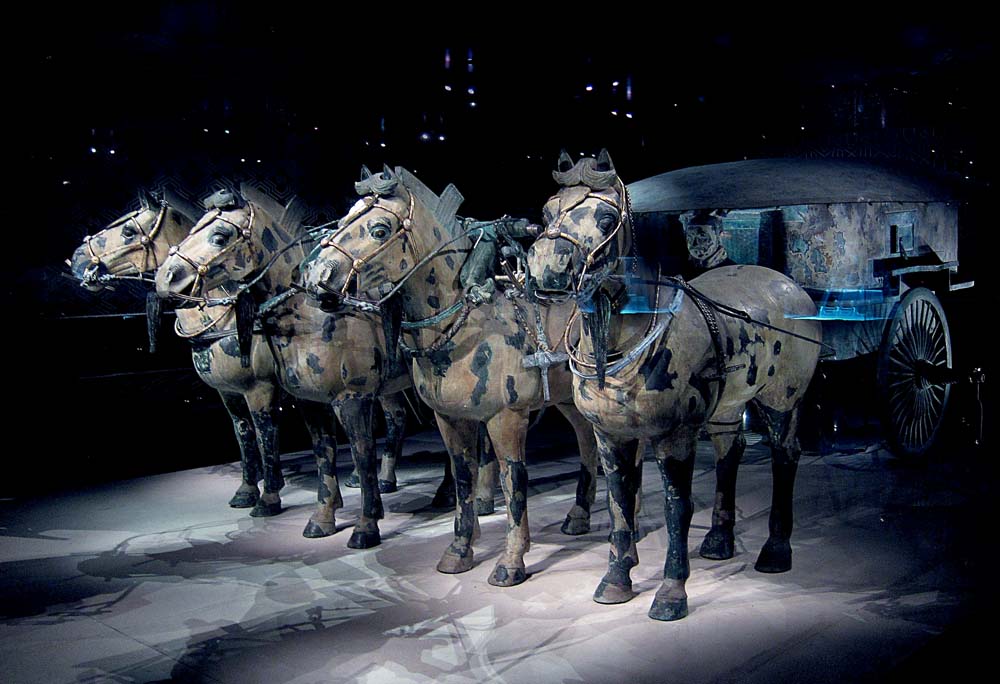
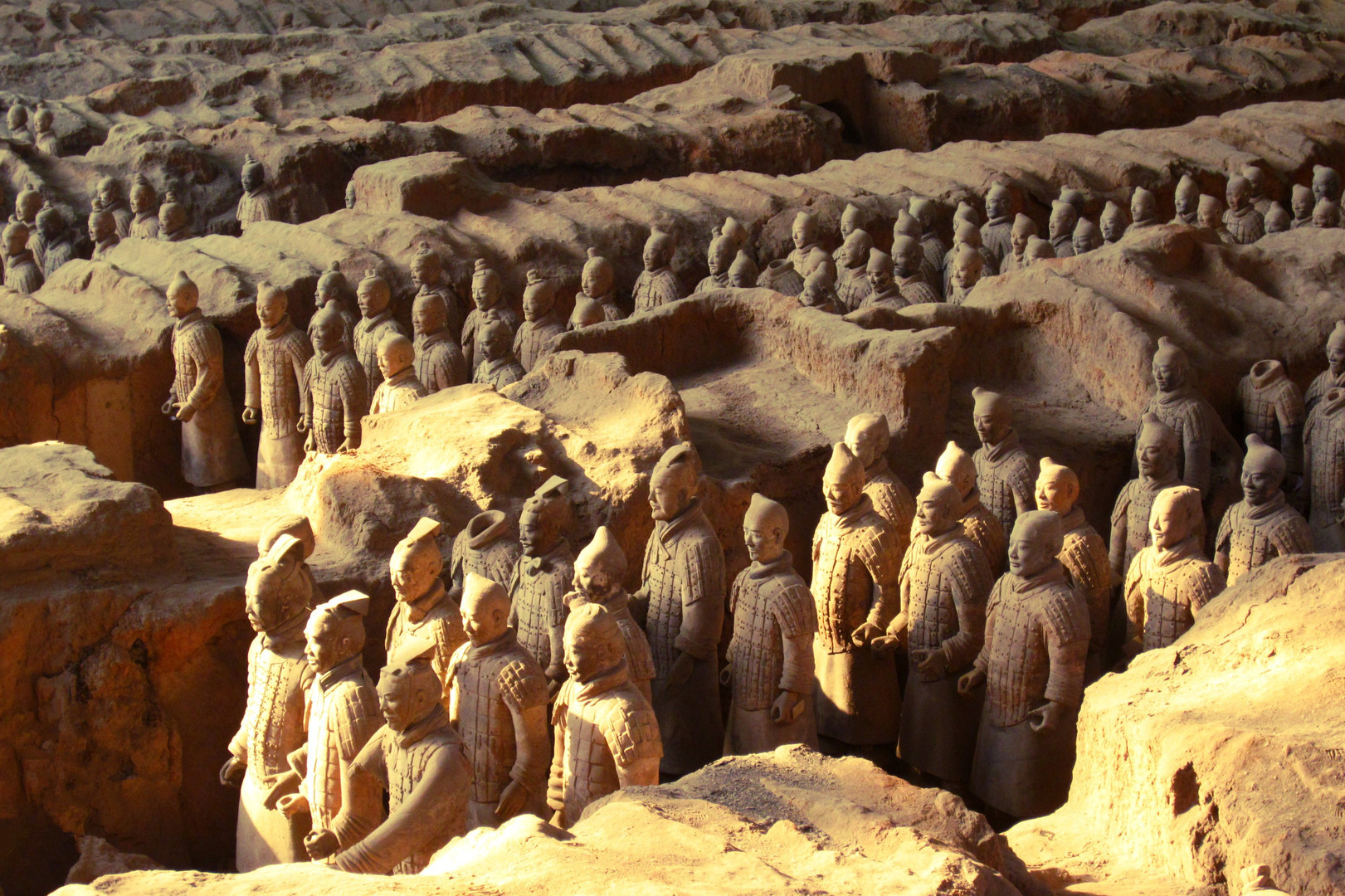
Big Wild Goose Pagoda
Giant Wild Goose Pagoda or Big Wild Goose Pagoda, is a Buddhist pagoda located in southern Xi'an, Shaanxi province, China. It was built in 652 during the Tang dynasty and originally had five stories. The structure was rebuilt in 704 during the reign of Empress Wu Zetian, and its exterior brick facade was renovated during the Ming dynasty. One of the pagoda's many functions was to hold sutras and figurines of the Buddha that were brought to China from India by the Buddhist translator and traveler Xuanzang.
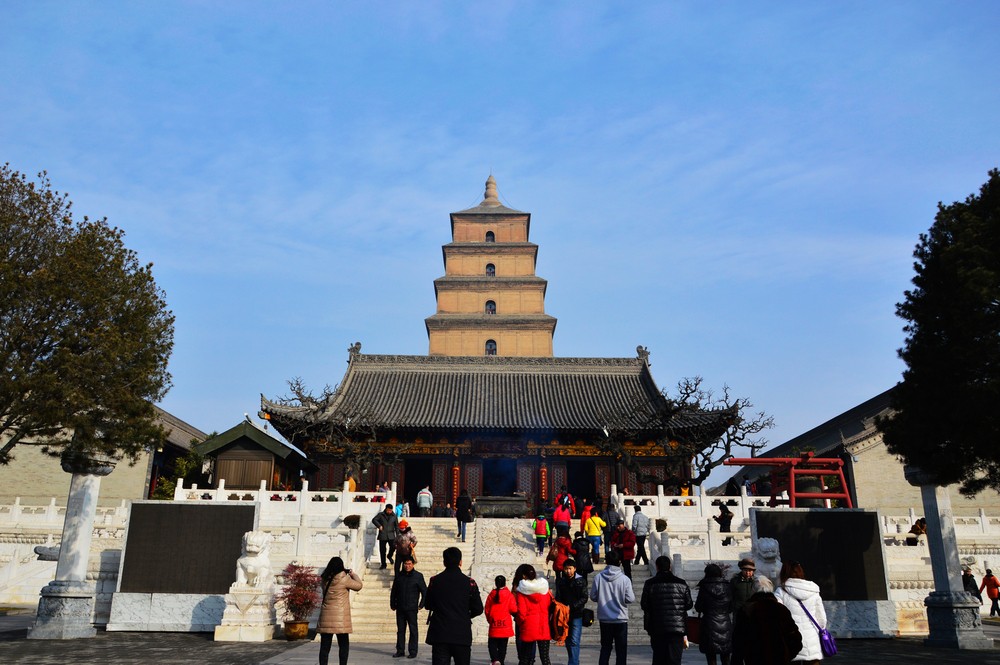
Xi'an City Wall
In Xi'an, an ancient capital of China, represent one of the oldest, largest and best preserved Chinese city walls. It was built under the rule of the Hongwu Emperor Zhu Yuanzhang as a military defense system. It exhibits the "complete features of the rampart architecture of feudal society". It has been refurbished many times since it was built in the 14th century, thrice at intervals of about 200 years in the later half of the 1500s and 1700s, and in recent years in 1983. The wall encloses an area of about 14 square kilometres (5.4 sq mi)
The Xi'an City Wall is on the tentative list of UNESCO's World Heritage Site under the title "City Walls of the Ming and Qing Dynasties". Since 2008, it is also on the list of the State Administration of Cultural Heritage of the People's Republic of China. Since March 1961, the Xi'an City Wall is a heritage National Historical and Cultural Town.
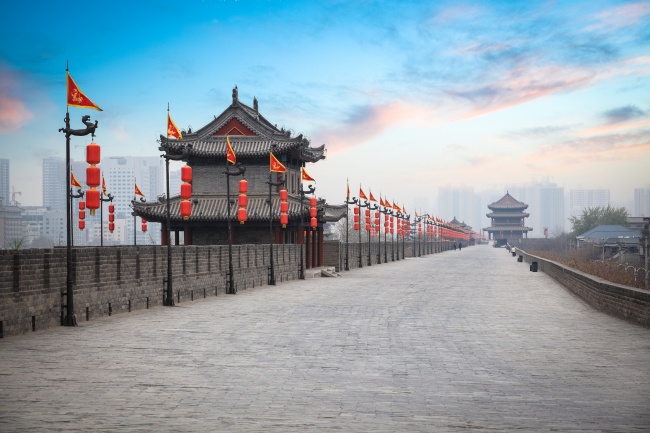
Xi'an Museum
Xi'an Museum, which is located to the northwest of the Giant Wild Goose Pagoda in the ancient city Xi'an, in the Shaanxi province of China, is one of the first huge state museums with modern facilities in China and one of the largest. The museum houses over 370,000 items, including murals, paintings, pottery, coins, as well as bronze, gold, and silver objects. The modern museum was built between 1983 and 2001 and its appearance recalls the architectural style of the Tang Dynasty.
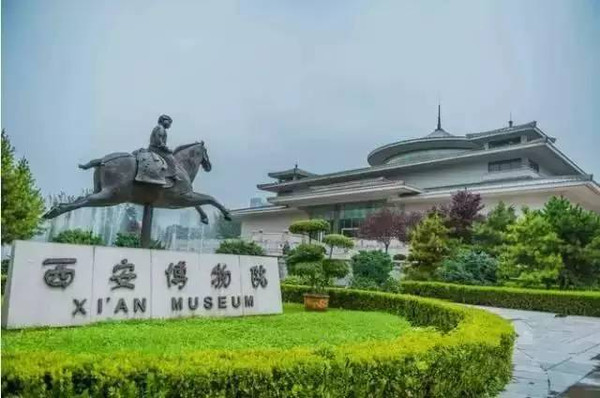
Wechat: Chinaprivatetour
24 Hours Hotline:
+86 137-3541-1378
* Authentic Experiences: Genuine local experiences that immerse you in the true essence of Suzhou and beyond.
* Safety First: Highest safety standards with secure activities and reliable transportation.
* Customizable Tours: Flexible itineraries tailored to your interests and needs.
* Local Expertise: In-depth knowledge of Suzhou and China, offering exclusive insights.
* Professional Guides: Licensed bilingual guides with over 5 years of experience.
* Comfortable Travel: Experienced drivers and well-maintained vehicles for a smooth journey.
* Sustainable Tourism:Commitment to responsible tourism and supporting local communities.
* Customer-Focused: Personalized service and continuous improvement based on your feedback.
* Free Cancellation: Cancel up to 24 hours before travel for flexibility and peace of mind.
* 24/7 Support: Round-the-clock assistance for any questions or help needed.
1 to 1 tailor-made service from our professional travel advisors for the most sophisticated
Constantly excellent reviews for attraction, hotel and service Competitive price
Local experts provide quality tours Best selected knowledgeable local guides Authentic local restaurants
7*24 hours available to create you a worry-free tour. No Hidden Fees and absolutely no pressure to buy. Secured









Copyright © 2017 Suzhouprivatetour.com All rights reserved. 浙ICP备18056007号-4